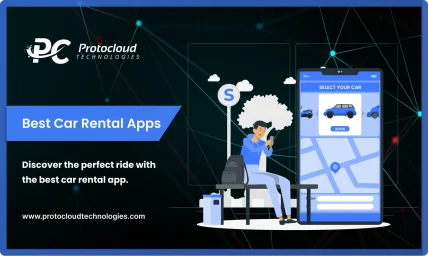Build an eCommerce website for the online stores via getting services in different technologies like Magento, Shopify, Opencart, and so on.
Protocloud Technologies is awarded the status of one of the best eCommerce website and application development companies in the USA & UK that work on the latest technologies always. Our eCommerce experts have designed various business-centric and trendy solutions for our clients. We have been working in the eCommerce web development industry for several years, thus we have good knowledge on how to handle the complexities of eCommerce development and give clients a bug-free website.
With good experience in eCommerce app development, we have accomplished several successful B2B and B2C projects for now. Our well-trained team can compose high ranking eCommerce website with the assistance of multiple web technology skills in Magento, WordPress, Shopify, and many others. Our main aim to deliver the best results to our clients under minimum resources.
Hire our dedicated developer who can easily convert your business app idea into a dream with good functionalities and theme design. Our development, designing, and marketing team of experts work together to make a website or mobile applications that help in achieving the vision of users.
For getting a responsive and functional eCommerce solution, you can contact our team right away.
To connect with us, you have to contact our project managers with your eCommerce web development requirements, then our developers will carefully analyze your requirements and contact you shortly with the correct solution for further discussion.
Mobile-Friendly Ecommerce Solutions
Mobile responsive eCommerce websites and apps created by our developers enable you to target mobile users and increase the sale of your products. Our software is designed to assist you and make sure the business runs smoothly.
24*7 Customer Support
Ecommerce software produced by Protocloud will enable you to follow up with your customers round the clock so that you always stay connected with your customers and earn instant feedback from them. This free flow of communication will boost the trust of your customers in your services
Social Media Presence
Our complete eCommerce development package will offer you full control of social media platforms to drive continuous traffic to your website. Social media grasp will also help you modify your products as per the real-time feedback from the customers.
Multiple Ecommerce Development Platforms
Our eCommerce professionals are trained to handle multiple eCommerce development platforms such as Magento, Drupal, WooCommerce, WordPress, Joomla, OpenCart, and much more. When it comes to offering variations to our clients, then nobody can beat us.
Authorized Payment Gateway
The financial services designed by us include direct or credit card payment online for retailers, digital businesses, etc., For e-commerce platforms having an authorized payment gateway is highly important and we design payment gateways after full consideration only.
Multiple Payment Structure
It is essential to offer multiple payment options to clients so that they can pick the payment method at their convenience. Thus, we include various payment modes in our payment system such as PayPal, Credit card, Debit card, and others.
Of course, we keep the latest search engine rules in mind and create eCommerce websites based on them. All the eCommerce solutions developed by us follow the SEO rules and always rank high on the search engine.
Yes, we can help you in redesigning your existing eCommerce website by following all the latest market trends. You just have to give us a call with your specific requirements.
Nowadays, eCommerce has gained huge popularity as it offers a wide array of opportunities for all sizes of businesses. With a well-structured online store, you can easily achieve your business goal by targeting a strong customer base in one go. Moreover, it boosts the sales and productivity of your business.
Global Market
Having an eCommerce website will enable you to reach out and offer your products & services to customers worldwide, regardless of the distance and time zone.
Open All Hours
Consumers will enjoy the round-the-clock convenience of purchasing what and when they want it, and you will not miss out on sales with an online shop that is open 24 hours a day, seven days a week, compared to regular store hours.
Build Your Brand
Broaden your product range and increase sales with intangible goods like eBooks that can sell on your online store. Consumers can also place orders for personalized things, making it effortless to present all the required information to suit their demands.
Higher Conversion Rate
Possible buyers are more likely to make purchases when they can place their order directly, rather than waiting for a general store to open.
Marketing Through Social Media & Search Engines
With good SEO, your website will appear in the exceptional results of search engines such as Google; working with an SEO services provider will allow you to learn how your target market is seeking online. Using this knowledge, you can then develop an online strategy to present your website to relevant, highly motivated consumers.
Also, social media websites like FB and Twitter will present you with a platform to build trust with your clients through reviews and ratings and keep them acquainted with regular posts about your products and offers. Keep your consumers engaged with competitions and shareable content to drive even more business to your website.
More Convenient
These days’ consumers appreciate the advantage of online shopping more and more. Rather than spending hours exploring in physical stores, people are now making investments over the Internet during breaks at work, before school, and in harsh weather situations, all the times that would be difficult to visit the shops. In addition, the presence of the market has made it easier for everyone, including busy parents wheelchair users, to shop around and make choices on buying without the hassle of staying in an environment that is not fully available.
We use all the most common payment gateways like PayPal, Stripe, WorldPay, Razorpay, InstaMojo, CCAvenue, etc., However, if you want to target a specific payment gateway, then on your request we can integrate it for you as well.
Yes, we offer round-the-clock services to our clients so that they never face any problem. You just need to contact us and we will be ready to help you out even during the wee hours.
For impressive eCommerce web development, you primarily need to focus on user-friendliness. Make sure that your website is easy to use, interactive and engaging. Your website must- have the potential to meet user`s needs without any delay, showcase your products and services in a better way.
1. Keep it simple.
One of the main rules you should have in mind during the design process of eCommerce is “KISS”—keep it simple, silly!
When it comes to designing an eCommerce site, simple is always better. The more elements you have on the page, the more it takes away from the entire point of the website—closing a sale.
You don’t need a ton of elements on your eCommerce website—all they do is act as a disturbance or distraction. Keep your design simple, clear, and clean—and keep all the focus on the sale.
2. Make branding a priority.
When it comes to buying online, people want to buy from established brands—not faceless e-commerce websites that seem like a front for trying to steal your credit card data.
If you want to gather the trust you need to make serious sales with your eCommerce enterprise, you need to put some serious consideration into the branding of your business. Your branding is like the core of your eCommerce business; it’s who you are as a business, what you’re about, and how you’re different from your opponents—and it plays a massive part in driving sales and building a relationship with your audience.
If you want to get the most from your eCommerce design, take the time to establish your brand—and then introduce that branding into your design. If you’re not sure who and what you are as a company, that’s ok! You’re just going to want to do a little business soul-searching before you get planning. Ask yourself questions like:
- If I had to express my brand in three expressions, what would they be?
- What makes my brand distinct from other eCommerce stores out there?
- What do we do better than everyone else in the business?
Once you know who and what you are, you can work it into the branding of your eCommerce website.
3. Think like a website visitor
If you want your eCommerce design to connect with your customers, you need to think like your customers. Finally, there are a few things that your potential consumers want in an eCommerce experience—a site that is well-designed, easy to navigate and makes the process easy, hassle-free, and straightforward.
If you want your eCommerce shop to work, you’d completely give them those things.
During the draft process, put yourself in your customer’s shoes. What kind of design is going to be easiest for them to operate? How can you create your products in a way that makes sense for the end-user? How can you simplify the checkout method?
When you think like your consumer, you can predict what they want from your eCommerce store—and then design your store to meet those needs.
4. Use color to your advantage.
Determining the colors for your eCommerce website is about more than just saying, “Well, red is my preferred color, so…let’s make all the elements red!” Color is a powerful tool—and if you know the psychology behind color, you can use it to your benefit (and drive some serious sales in the process).
Various colors can inspire different feelings, sentiments, and actions from oneself—so, if you want your eCommerce website to convert, you need to use those color thoughts to your advantage.
So, for example, if you want consumers to purchase on your website, make the CTA button stand out with rich colors like red. According to color psychology, red sparks excitement and passion, driving factors behind spending—and studies show that making a button red can boost conversions to a whopping 37%.
Or, if you want to up your credibility, include blue in your design. Blue is not only an extensively loved color, and it also increases feelings of trust, making it a go-to in the business world (there’s a reason the color blue appears in more than half of all logos).
The conclusion is, color is one of the powerful tools in your design toolbox—and if you know how to use it, Colors can have a massive impact on your eCommerce design.
5. Make your content scannable.
You can spend days crafting long descriptions for the products on your eCommerce site, but we’ve got news for you—no one is going to read it.
Research shows that most website visitors only read about 20% of the text on any given web page. Instead of reading content word for word, they scan the reader looking for critical information—so, if you want to get your point beyond (and drive sales in the process), you need to make your content scannable.
Break up your content—whether that’s product descriptions, blog posts, or an “about us” page—into an easy-to-scan format. Keep sentences and paragraphs short, use bolding to call attention to crucial information, and use bulleted lists to break up large blocks of texts.
The easier to scan your content, the more likely your audience will absorb your key messaging—and the more likely you’ll be able to make a sale.
You can include as many pages you want on your eCommerce website. If you have plans to scale your website, then be our guest.












































